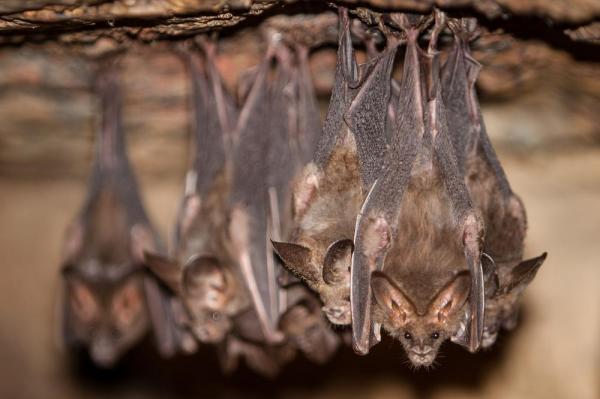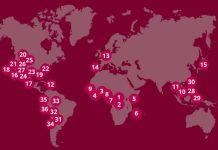LONDON, Jan. 5 (UPI) — West Africa, sub-Saharan Africa, and Southeast Asia are among the places most at risk for a virus to jump from bats to humans, according to new research.
Scientists at University College London mapped risk levels based on patterns and drivers for the sharing of viruses between bats and humans with the hope of preventing future pandemics.
Bats, researchers say, carry multiple viruses that pose health risks to humans, and are suspected to be the origins of rabies, Ebola, and severe acute respiratory syndrome, or SARS.
In June, researchers at the University of Minnesota discovered two genetic mutations that allowed the Middle Eastern respiratory virus to jump from bats to humans, and in June found a SARS-like virus that may be able to make the leap.
“We are seeing risk hotspots for emerging diseases where there are large and increasing populations of both humans and their livestock,” said Liam Brierley, a doctoral student at the University of Edinburgh, in a press release. “As a result, settlements and industries are expanding into wild areas such as forests and this is increasing contact between people and bats. People in these areas may also hunt bats for bushmeat, unaware of the risks of transmissible diseases which can occur through touching body fluids and raw meat of bats.”
The researchers used data published in 453 sources between 1900 and 2013 about 33 bat viruses across 148 species that are dangerous to humans. The results were modeled for patterns and drivers of virus sharing, as well as number of viruses found in various areas, population pressure, and hunting bats for meat, which can easily lead to disease transmission.

“We’ve identified the factors contributing to the transmission of zoonotic diseases, allowing us to create risk maps for each,” said Kate Jones, chair of ecology and biodiversity at University College London. “For example, mapping for potential human-bat contact, we found Sub-Saharan Africa to be a hotspot. Whereas for diversity of bat viruses, we found South America was at most risk. By combining the separate maps, we’ve created the first global picture of the overall risks of bat viruses infecting humans in different regions.”
The study is published in The American Naturalist.







